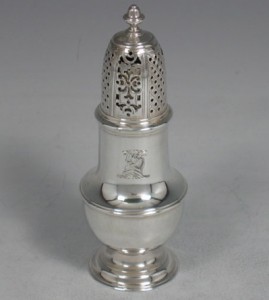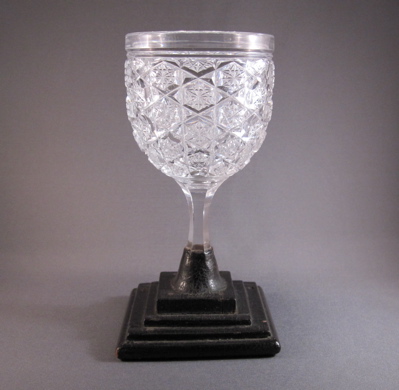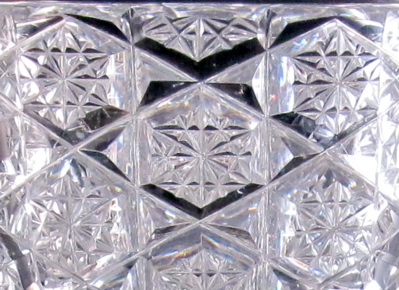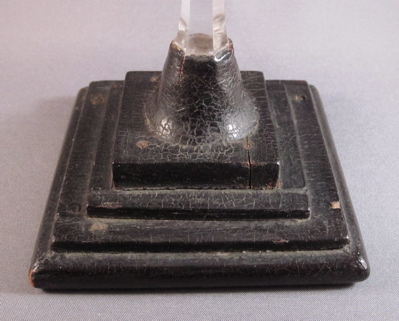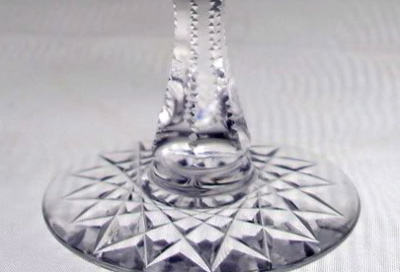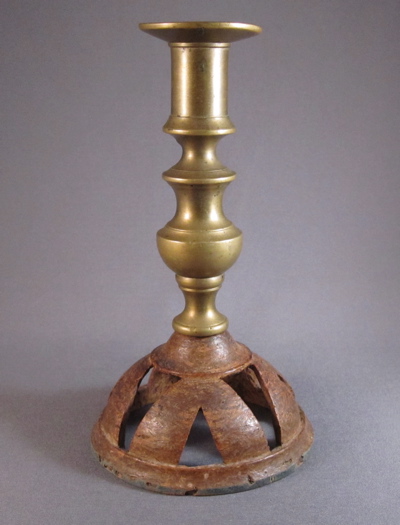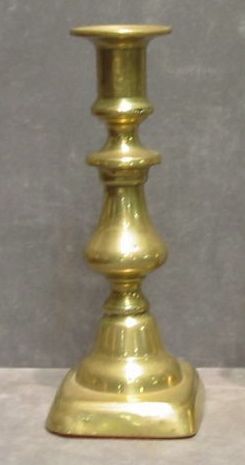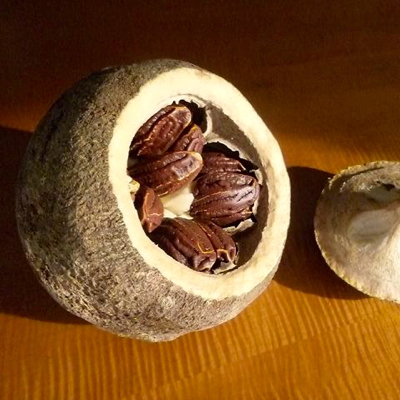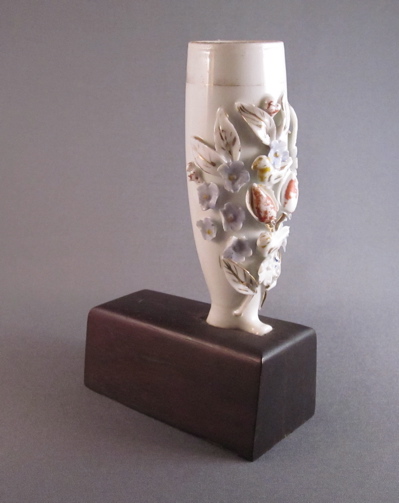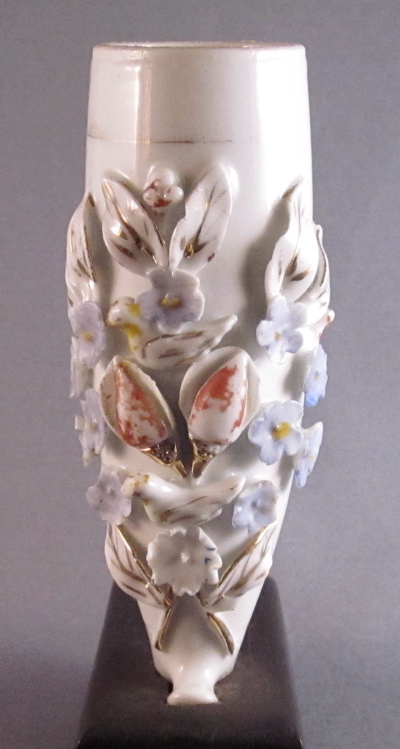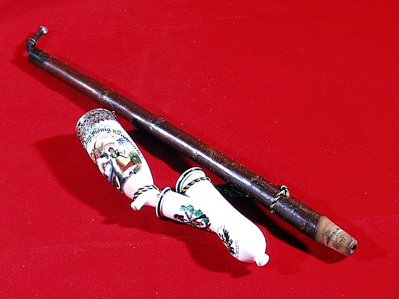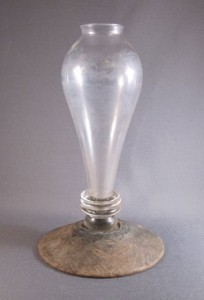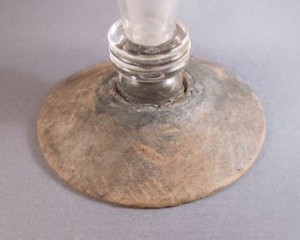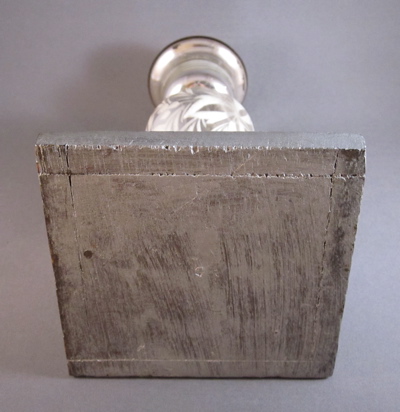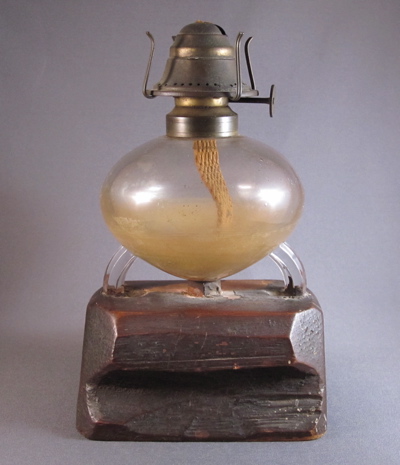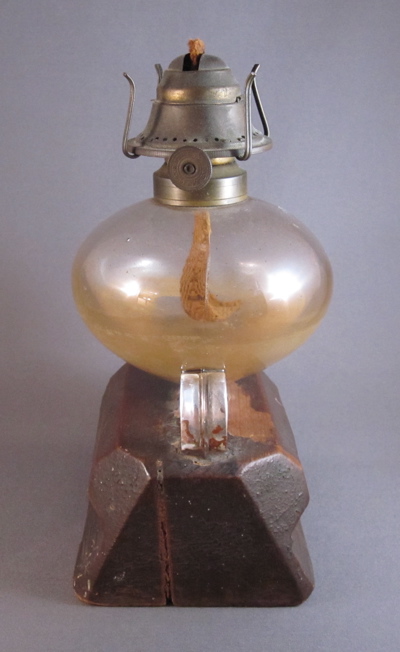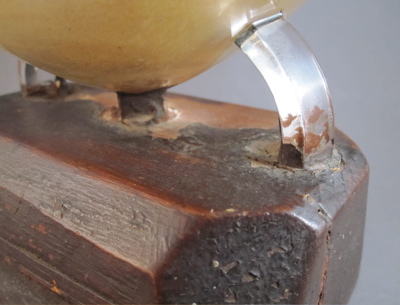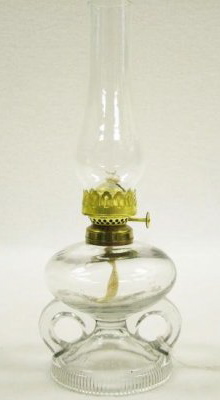A well worn English miniature cannon from the late 19th century shows it was much loved for many years. A Victorian boy perhaps found this under his Christmas tree and played with it until the delicate base became detached, leaving the sturdy cannon barrel abandoned.
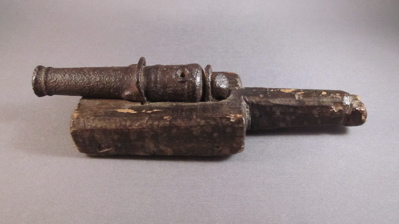
The boy’s father, grandfather, friend, or the boy himself must have whittled the crude base out of a piece of scrap wood and attached the iron barrel using two pieces of heavy wire. A coat of brown paint completed the repair and although the cannon looks nothing at all like the unbroken original, it is still highly functional and no doubt brought joy to the original owner.

Cannon in its new incarnation with replacement wood base measures 6-1/2″ long.
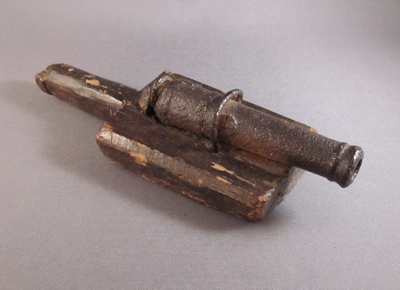
The underside reveals pitted metal wire and and an unfinished wood surface.
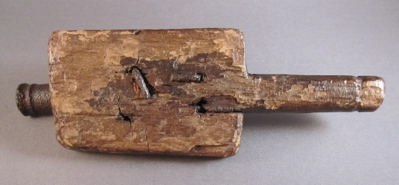
This toy cast iron ship’s signal cannon from the early 1800’s shows what the original base on my cannon might have looked like.
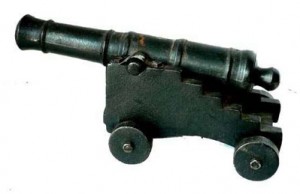
Photo courtesy of Land and Sea Collection




